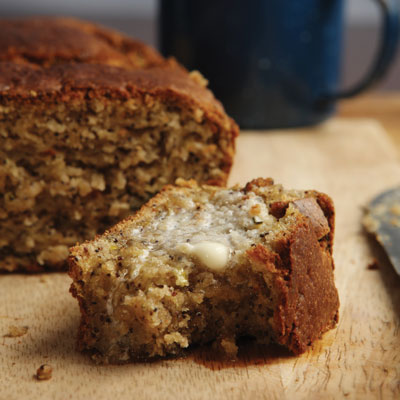Adventures in Soy Milk: Do it yourself for economy and experimentation
Are you an eager consumer of seen-on-TV-type kitchen gizmos? I wasn't until I became the proud owner of an automatic soy-milk maker. Not only does this appliance make fresh soymilk, but it also churns out raw nut milk, smooth nut butter, porridge, rice paste, even soup. It also converts to a coffee grinder and dry food mill that works well on whole spices. What's more, with the optional tofu press, I'm making tofu, too. All this milk making has me inviting guests to sample my latest recipe. (All of you juicers who push apple-carrot-ginger concoctions onto family and friends can relate.) Maybe it will be Zen-like five-bean milk, a to-go glass of vanilla soy with a touch of sugar or some kid-friendly chocolate soymilk. Or a shot of Kahlúa in a cup of hot plain soymilk to take the edge off. I didn't buy the Soyabella soy-milk maker just for kicks. It was an investment decision made after analyzing the sorry state of commercial soymilk. Four dollars for a half gallon? That's crazy. And if you're wary of industrial agriculture, it is reassuring to be able to pronounce all the ingredients. Calculating the cost of the machine and the beans, it will take about 10 months to break even. The added bonus is now there's no need to run to the store for milk; it takes all of 15 minutes to make a liter. There is a learning curve to the DIY method. Not one for chalky milk, I put mine through an extra strain using a cheesecloth. On the tofu front, it took a few tries to figure out how much natural calcium sulfate (gypsum) or magnesium chloride (nigari) to add to the soymilk to get it to coagulate before pressing it into a nice firm block. Homemade tofu is a bit labor intensive, but it doesn't crumble in a stir-fry and soaks up flavor better than many commercial brands. Cooking with the leftover residue from milk making has been an adventure unto itself. When soybeans are pressed to extract soymilk, the remaining residue is called okara. It has a quite mild flavor that absorbs other flavors easily. My successful okara food lab experiments have been mainly muffins, but stovetop creations like pancakes and okara bean patties get two thumbs up. I was pretty proud of sweet rice balls made from glutinous rice milk residue mixed with raisins then rolled and dipped in a mixture of powdered sugar and cinnamon. Another winner: veggie meatballs made from leftover almond nutmeat; they looked exactly like real meatballs and tasted delicious. Lemony zucchini bread (see recipe) is a formidable addition to any arsenal of natural baked goods. Besides the soymilk, the other secret ingredient is the tahini, a good replacement for eggs and oil, and one that lends a hint of nutty flavor to this slightly dense bread. The lemon juice gives it a refreshing, sunburst taste, and the poppy seeds are great for texture and eye appeal. Now that the Soyabella is a fixture in my kitchen, I scan every new recipe with a different eye: Can I plug in the Soyabella for this? Recently, The New York Times Magazine published a recipe for horchata. You bet that I turned on the machine to make the almond rice milk. Ligaya Figueras is a Central West End-based freelance writer and home cook extraordinaire. She's considering becoming a Soyabella spokesperson.Related Recipes
Most Recent
The Vandy, STL Barkeep team will open Off Elm in Webster Groves this fall
The cocktail wizards behind The Vandy will soon have another locus for …






